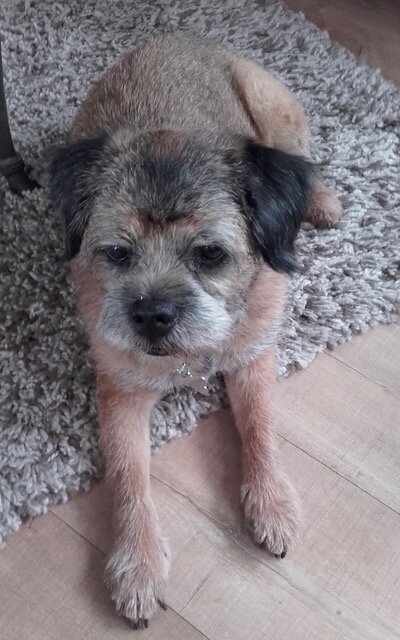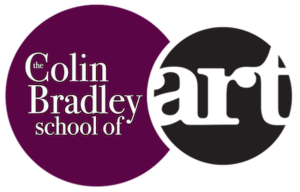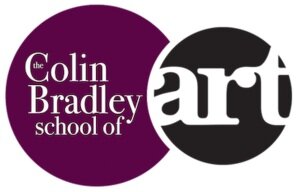Two Foxes Feedback - Help with Contrast and Foreground
One of our members Ian sent us his picture of the Two Foxes subject requesting some feedback and also some advice on a future picture he is needing to do. Ian writes:
Hi SteveI would like some feedback on my two foxes that I did and have enclosed.I would also like some advice from Colin regarding colours I should perhaps use for this dog I have been asked to do as I am a bit confused.Kind regardsIan
 Listen to, or read Colin's advice below:
Listen to, or read Colin's advice below:
Contrast
First of all let's deal with the foxes. I think you've done a very good job of this actually. I know that whenever you look at the pictures that I do and then you look at your own work you think well there's a lot that I need to do or want to do but this usually comes with experience. One of the things I will pick out for you is the contrast. Contrast is one of the other problems we get when people send us their work. You may have heard me say this before it's where you got the lighter area particularly the left hand Fox that is light across the top of the head or the side of the head shall I say and the background is also very light. Now that could have been a little stronger certainly. It tends to melt in to the Fox so this is where the contrast side of it comes in. Other than that I think you've done a good job of it.I would point out the fox on the right hand side, it looks as so there's three legs. There's a split down one of the legs there where that's a crease in fact on the Fox. If you look at my original picture you'll see that it doesn't quite look the same as that. It's a crease where you've got a separation in the leg itself but it's only the one leg not two legs. So that's another thing that you could alter and again check my picture out and try to find out why how and when and why I've made that adjustment.
Background/Foreground
Another thing I would certainly do in a situation like this is where you've got a background or foreground should I say where you've got the rocks and the grasses. These are always very hard to do and I've never really found anybody any of my class members actually able to crack this. It's a particularly difficult thing. So what do you do in fact situation as is reduce it a bit. So if you'd have brought the grasses up a little more or reduce the depth of that foreground area you would have found you could have lost some of those rocks in it and that would have helped a little there.
Choosing Colours For The Dog
 So going on to the dog. This is a question really of greys and pinks and I would tend to use the greys. Sometimes you get a picture that can incorporate the warm colours and the cool colours. So the warm colours of Grey is 270 and 273 and then you would usually go on to a brown or the 175 for instance.But when you look at the head it has a very cool influence. In other words the 230, 233, 181, particularly 181 because the ear on the right hand side. Now it may be the light that's giving you this it looks as though the ears are two different tones but they're probably not. It may just be the lighting but anyway you got to follow if you're doing this dog you've got to follow what you see you can't make things up and there you would need 181 most certainly.So you need all the grays that I see 230, 233, 181 and then a little black to create that effect. As far as the Pinks are concerned well you can put in 189 which is a good colour and that is like a peachy pink and that would work very well particularly where you've got strength on the legs.So anyway hope that's helped. It certainly is a bit of a challenge for you. I never really like doing animals that I'm looking down on because it creates a problem but you know if that's the only picture you've got then you've got no choice you have to do it. I hope all these little tips help you and I look forward to seeing them when you're done. If you would like to learn how to use pastel pencils and receive feedback on your work, please have a look at our membership where you can access hundreds of lessons across a range of subjects.
So going on to the dog. This is a question really of greys and pinks and I would tend to use the greys. Sometimes you get a picture that can incorporate the warm colours and the cool colours. So the warm colours of Grey is 270 and 273 and then you would usually go on to a brown or the 175 for instance.But when you look at the head it has a very cool influence. In other words the 230, 233, 181, particularly 181 because the ear on the right hand side. Now it may be the light that's giving you this it looks as though the ears are two different tones but they're probably not. It may just be the lighting but anyway you got to follow if you're doing this dog you've got to follow what you see you can't make things up and there you would need 181 most certainly.So you need all the grays that I see 230, 233, 181 and then a little black to create that effect. As far as the Pinks are concerned well you can put in 189 which is a good colour and that is like a peachy pink and that would work very well particularly where you've got strength on the legs.So anyway hope that's helped. It certainly is a bit of a challenge for you. I never really like doing animals that I'm looking down on because it creates a problem but you know if that's the only picture you've got then you've got no choice you have to do it. I hope all these little tips help you and I look forward to seeing them when you're done. If you would like to learn how to use pastel pencils and receive feedback on your work, please have a look at our membership where you can access hundreds of lessons across a range of subjects.

